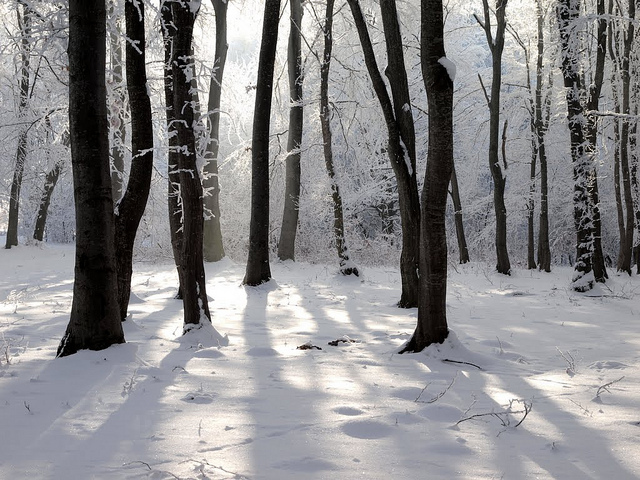Growing up in Lancashire in the
North West of England, I was surrounded by trees. Even though I lived in a city, many trees
grew in and overhanging my school grounds, trees lined many streets, filled city
parks, and one even grew directly outside my house. A big old tree, a maple I think. I remember as a child standing in the middle
of my street, looking up into the beautiful light green canopy that shaded my
road, and throwing a tennis ball straight up through it, to slowly come back down
and let me catch it. I couldn’t reach
the top myself, but somehow, sending my ball up there and back, it was as if I
could touch a little piece of magic.
Trees form a huge part of our childhood,
somehow they naturally feel safe to us, as if they are tall, wise guardians
watching over us. Instinctively we want
to reach out a hand and touch their bark.
It’s tactile and secure, encouraging us to climb and explore. In my early years at school, I remember
taking a piece of paper, placing it against a tree trunk, rubbing a crayon over
it, creating the texture of the bark directly onto my paper.

My earliest natural toys came
from trees, the helicopter like sycamore seed that twirls and spirals its way
to the ground, as if designed to capture the attention of a child, to pick it
up and twirl and twirl, transporting it to a new destination - a natural way to
spread its seeds. A pine cone also captures
a child’s imagination, another tactile delight to behold. I remember running my fingers over it’s
strange shape, taking it home to put on my windowsill, then watching it open
and close depending on the weather, displaying the humidity level like a
natural hygrometer.
And of course there were the
conker games the boys would play on the way to school, at breaktimes, playtimes,
hometimes, and any time they could get away with it when the teacher wasn’t
looking!
On the trip to and from school I
would love crunching the crisp autumn leaves under my feet, giving me an
enormous amount of pleasure, and a huge smile across my face. A happy and carefree feeling is the gift
nature gives to you.
Trees are with us, right through
our school years and beyond into adulthood.
They teach us about the world around us, help us learn how to read, to
write, and to draw. It wasn’t until a
teacher wrote in my exercise book “Don’t Waste Trees!” on a half page I’d
skipped to start at the top of the next page that I really thought about where
my paper comes from. It is in fact, from
trees. If you are indoors as you read
this, I imagine you will be surrounded by the products of trees. For example, I am using a laptop sat on a
wooden folding desk; I have a paper calendar hanging on the wall, and a paper
diary next to me with all my To Do List items on it. There are paperback novels on my shelves,
hardback reference books on a taller bookcase, and magazines I’ve recently
enjoyed reading strewn to my side. I
also have photos in frames printed on photo paper, a wooden door, and wooden
floorboards under my carpet. In many
buildings heat is produced by coal and log fires, staving off the cold and
keeping us warm. Trees really do provide
our shelter, our education, images of our loved ones held dear to us, and fire
off our imaginations in novels and fantasy art images on calendars.
Within the pages of C.S. Lewis’s,
The Lion, The Witch, and the Wardrobe,
we really do discover a whole new world.
Lucy discovers a huge old wardrobe in a spare room, within it are thick
fur coats to wade through, and through the back… paradise. And what does paradise look like? A beautiful wood forest covered in snow.
Trees contain our history, our
memories are closely interlinked with them.
And because trees can live to hundreds of years old, many have far
greater histories attached to them, farther back before we were even born. Some have witnessed epic battles, historic town
meetings that took place beneath their boughs before townspeople thought to
build town halls. Many years of history
are wrapped up in trees, hidden within their many layers of age, wisdom and
memories.
And yet trees, that are far older
than any historic listed building, are not listed. There is no register or listing that protects
ancient trees from being uprooted and demolished. Surely we should protect trees as much as
they have protected us? They have looked
after humankind for hundreds of years, sheltered us, educated us, and kept us
warm from the cold outside. Surely we
can take a small step to thank them for all they have done for us, by protecting
them from damage and destruction by us, preserving them for future generations
to come, so that they too can learn the history and the beauty that lies within
these ancient trees.
The Woodland Trust is attempting to
do just that, to create a national register of important trees, to give them the
same protection as historic listed buildings.
Please show your support by sending a short message through the Woodland
Trust’s
Very Important Trees page. Together, we can make a difference. Because life’s better with trees.



